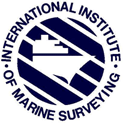The Broads Authority has taken charge of a second new mud wherry as part of a ten year strategy to replace old equipment.
Much
of the equipment was given at no charge to the Authority when it bought
the Griffin Lane dockyard from May Gurney in 2008 and it was always
known it had a limited life and would need replacement.
Named
Gleaner after an old timber sailing wherry that carried cargo into
Norwich, the new wherry has been built to a bespoke design by local
naval architect Andrew Wolstenholme to transport sediment dredged from
the rivers to other locations for re-use. She was constructed in Ireland
by John Kearney, the builder of her sister wherry Iona, and has joined
her in dredging the River Ant this winter.
This new design of
wherry is smaller at 16.5m long and can carry up to 40 tonnes of
sediment in the hold. It is stable, manoeuvrable and is small enough to
navigate the narrower rivers like the Chet and Ant.
A third wherry of the same design as Iona and Gleaner is being commissioned with delivery due at the end of 2015.
Also
retiring is a steel hulled barge with a crane mounted inside which has
given many years’ service removing sediment from the Broads. The crane
is being removed and her spare parts recycled to help maintain the other
cranes.
It is being replaced with a versatile 360 long reach
excavator which will sit on linkflotes and dredge using a new hydraulic
clam shell bucket.
Rob Rogers, Head of Construction, Maintenance and Environment, said:
“Over
the last four years we have purchased three long reach hydraulic
excavators, two new wherries and a set of four linkflotes.
“Maintaining
the navigation of the Broads National Park requires different plant and
equipment, as the width and depth of the rivers and broads varies,
meaning a combination of small and large vessels are required. Modern
excavators are able to swap between dredging, offloading, landscaping,
watercourse management and piling much easier than the traditional grab
cranes and offer a more versatile service.
The investment in the
new equipment and vessels demonstrates the Broads Authority’s
commitment to improving water depth, maintaining safe, clearly marked
channels and minimising disruption to the users of the waterbodies.”















































